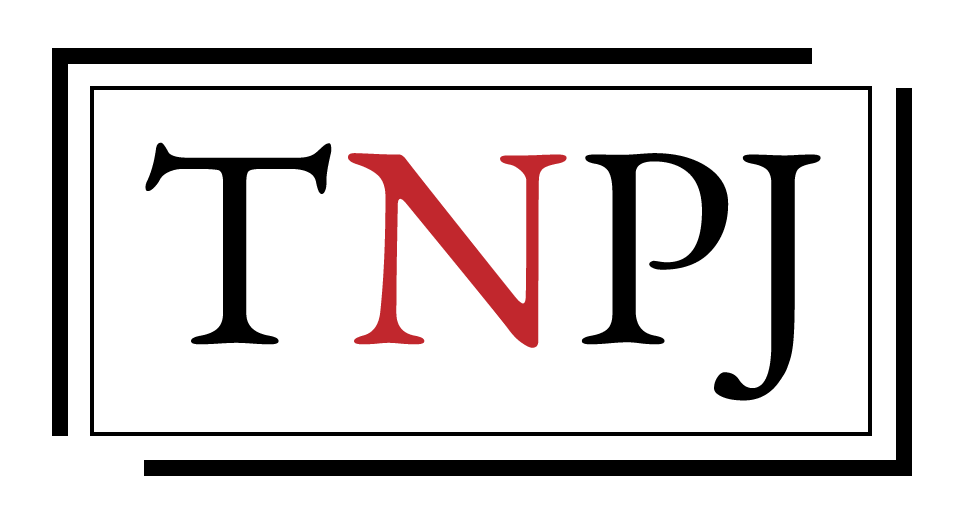Saskatchewan’s Bee Farmers Battle Drought & Disease
Saskatchewan’s Bee Farmers Battle Drought & Disease
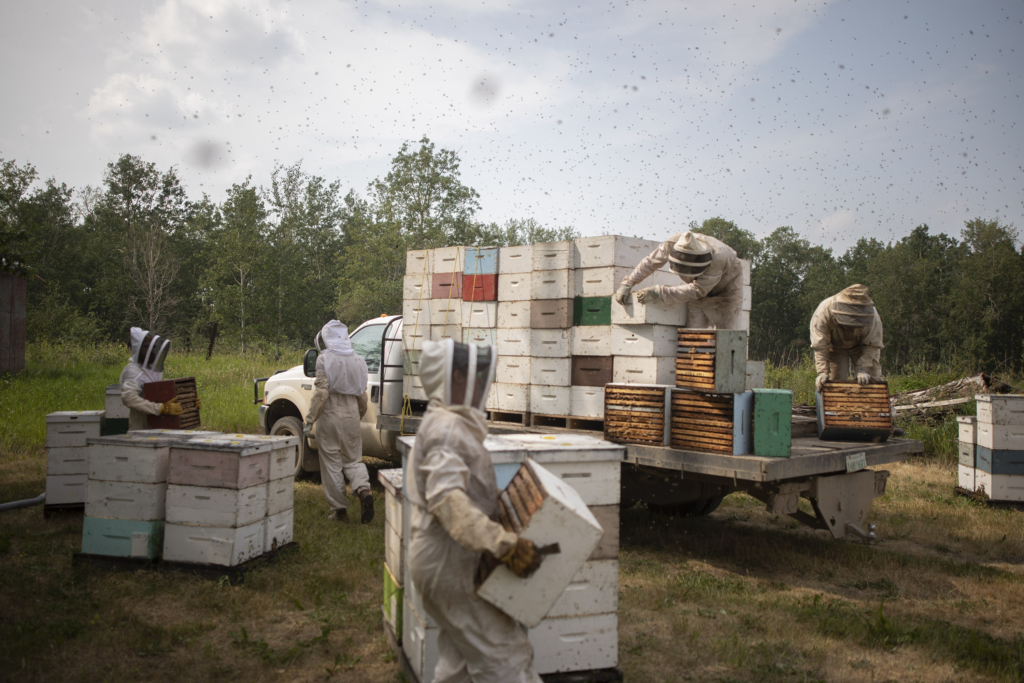
It’s a typical frosty fall morning in rural Saskatchewan. Nick Hawrishok and his dad fire up the old work trucks at Kitalko Lake Honey as they begin retrieving the last of the nucleus colonies from different locations around the Lac Vert area. It’s the last hurrah of a bee season that has been threatened by factors outside the farmer’s control.
Today Saskatchewan is home to approximately 112,000 honey bee colonies which account for approximately 25 percent of Canada’s honey production. The industry not only produces honey but is also an important part of the ecological web that supports the province’s agriculture.
Disease and climate change are both large factors when it comes to bee keeping. New illnesses take time to treat and newer solutions are being experimented to keep the bees working. These concerns where tested this year as the Saskatchewan agricultural sector faced a very serious drought, one of the worst in Canadian history (CBC).
“This year was a reminder of how inclement weather can have an effect on the weather crop,” says Kitalko Lake Honey’s proprietor Steven Hawrishok.
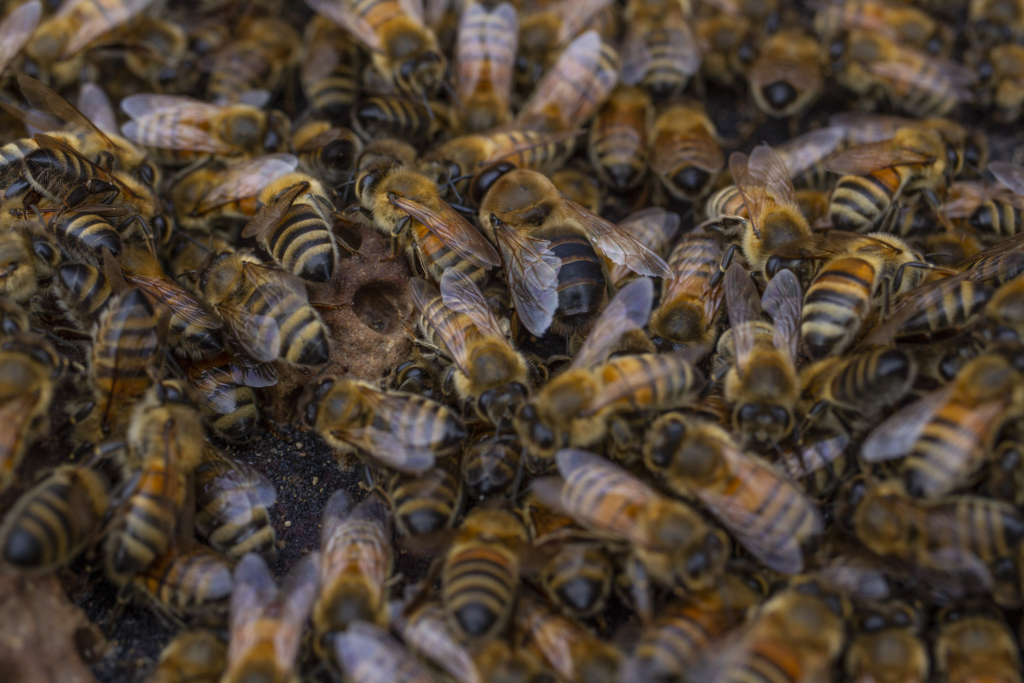
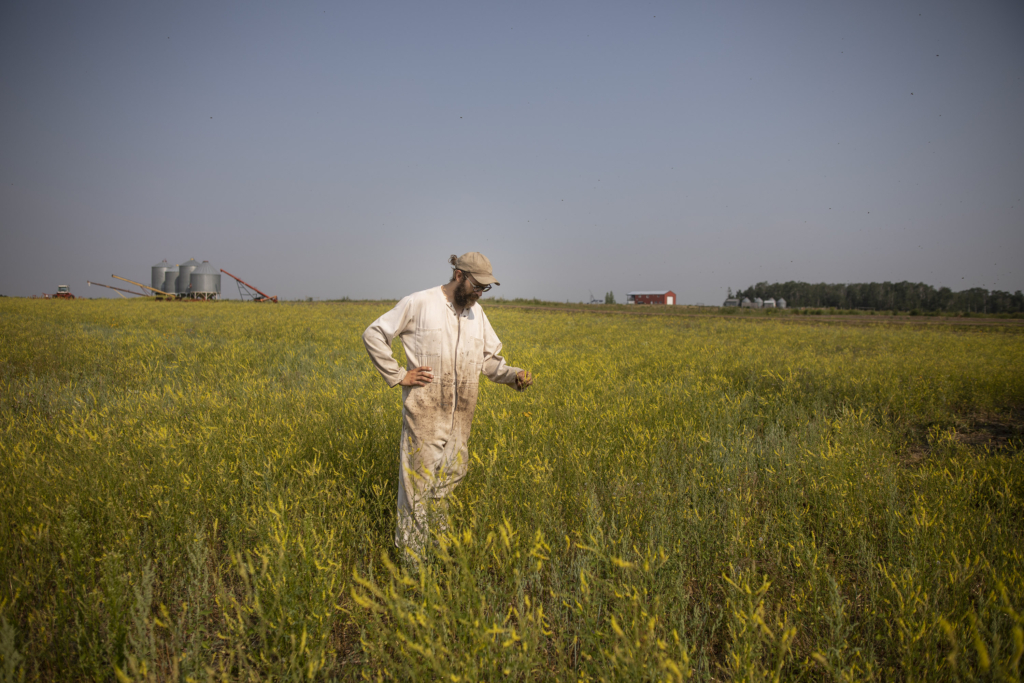
Farming has always been a precarious career, with local and international forces shaping the daily lives for those who put in the hard work to keep the agricultural industry moving. The bee farming industry shares many of the same trials and tribulations: climate challenges or global diseases being transported over borders are just some of the pitfalls facing those who enter this business.
Kitalko Lake Honey is a true family business, everyone chips in. Steven’s father Jim initially began operations in the 80’s after moving to the farm. Steven, who bought his first bee hives in 2013, took over Kitalko Lake Honey from his dad in 2016. Over the years both Steven’s parents turned the farm into a bee keeping operation that has grown to sell product wholesale and with Steven’s input, is now a commercial product that can bee seen in shelves across the province.
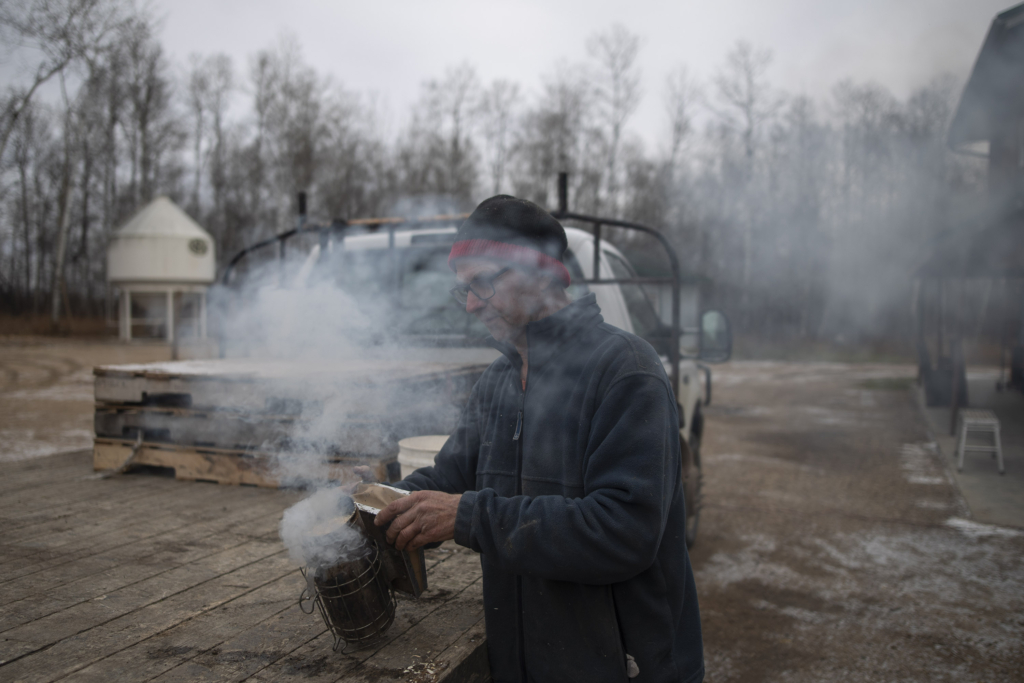
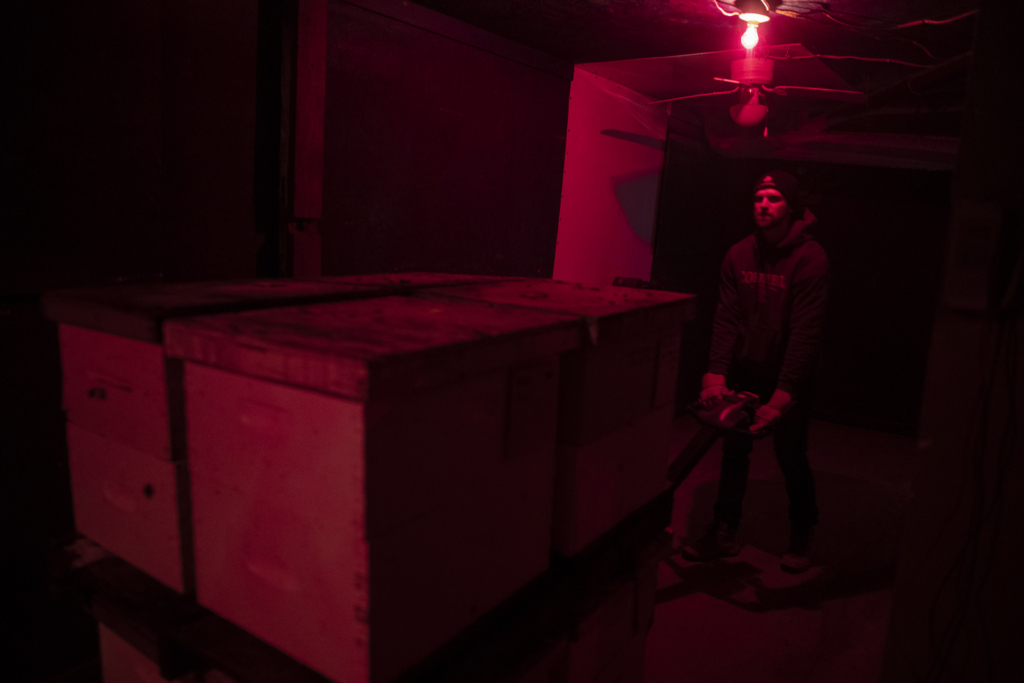
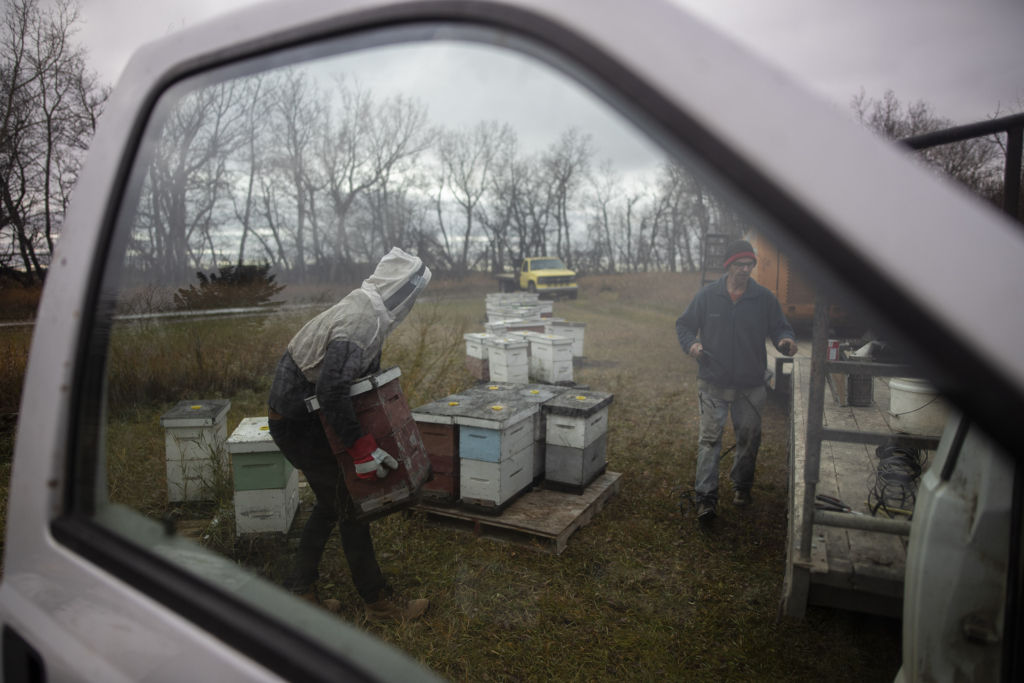
The relationship of the honey bee and the crops they pollinate is very symbiotic: if one of the other’s vital parts shuts down it can jeopardize the operation of the other. These are some of the issues that are always on Steven’s mind which add a lot of stress to a young entrepreneur carrying on a family legacy. “You would have to be a very privileged farmer to deal with losing a year” says Steven when discussing the sustainability of his farming operations.
A lot has changed since the 80s: technology, the environment and learning on the fly have all shape the business that exists today. As Steven states on his website, the company has an “attitude for experimentation”.
He is now using new methods to keep bee farming afloat like organic chemicals and “culture control” by cleaning and fumigating used frames so that disease does not cross contaminate new colonies. “We cant rely on the same old methods for pest and disease control,” he says.
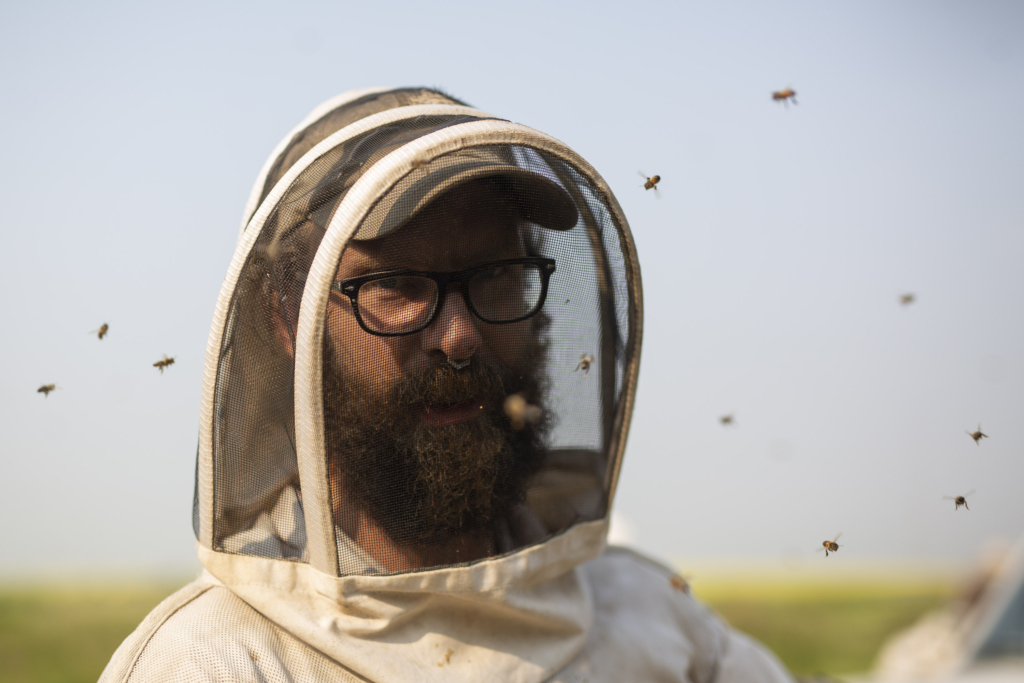
Despite Kitalko Lake being a family-owned operation it takes a medium sized crew of workers to pull the year’s harvest from multiple locations scattered around various farms where the hives are situated. The most common crop is canola but Steven’s bees take from both clover and wildflower from nearby brush.
Although the family managed to have a satisfactory harvest at Kitalko Lake, Steven did have to end his season much sooner due to the early harvest of canola, which his bees depend on as a source of nectar. Steven had the successful harvest he needed to carry him through the winter but as with other bee farmers across the province the next season is always cause for concern.
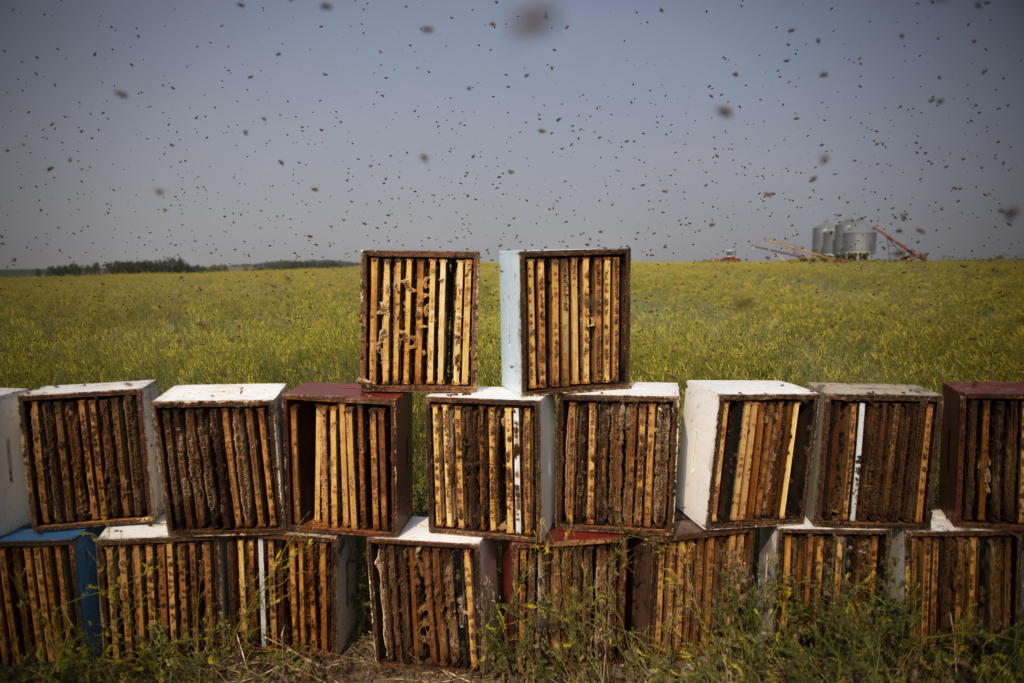
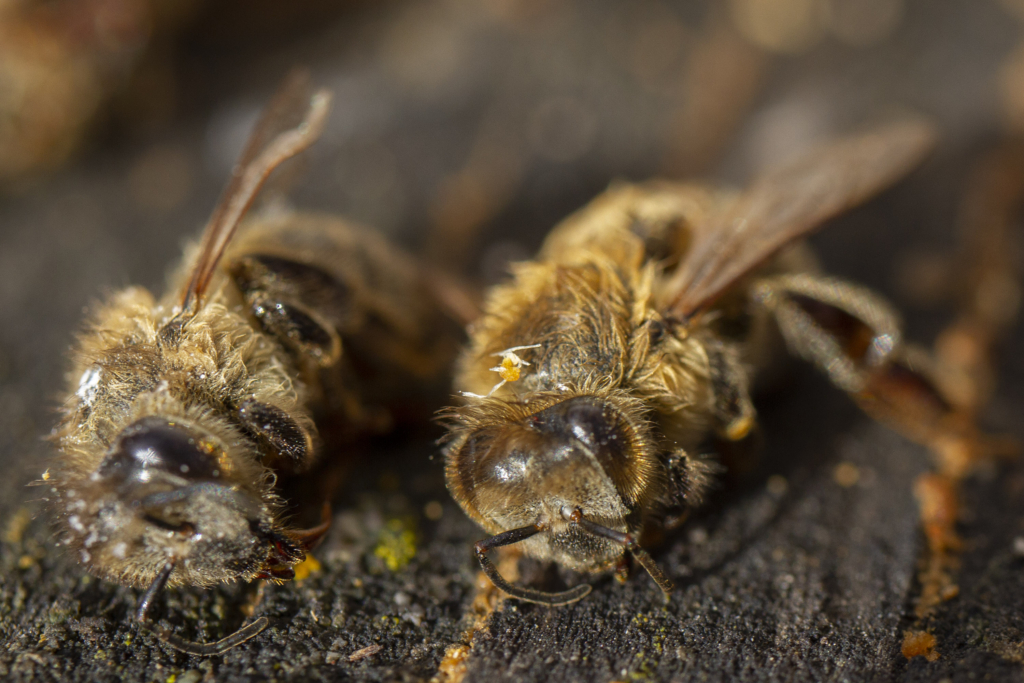
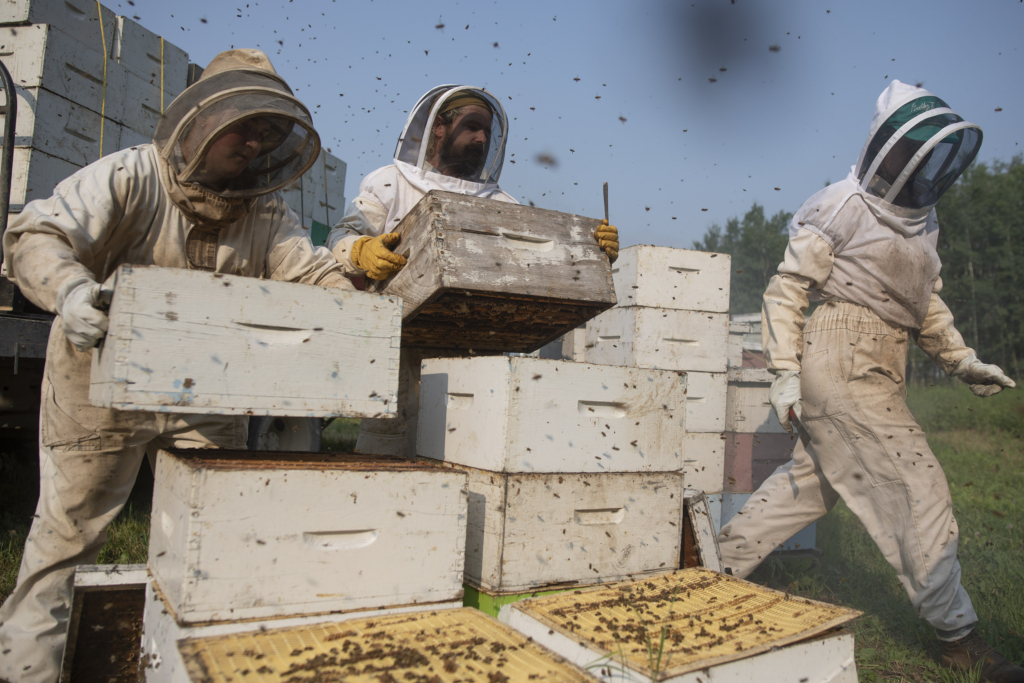
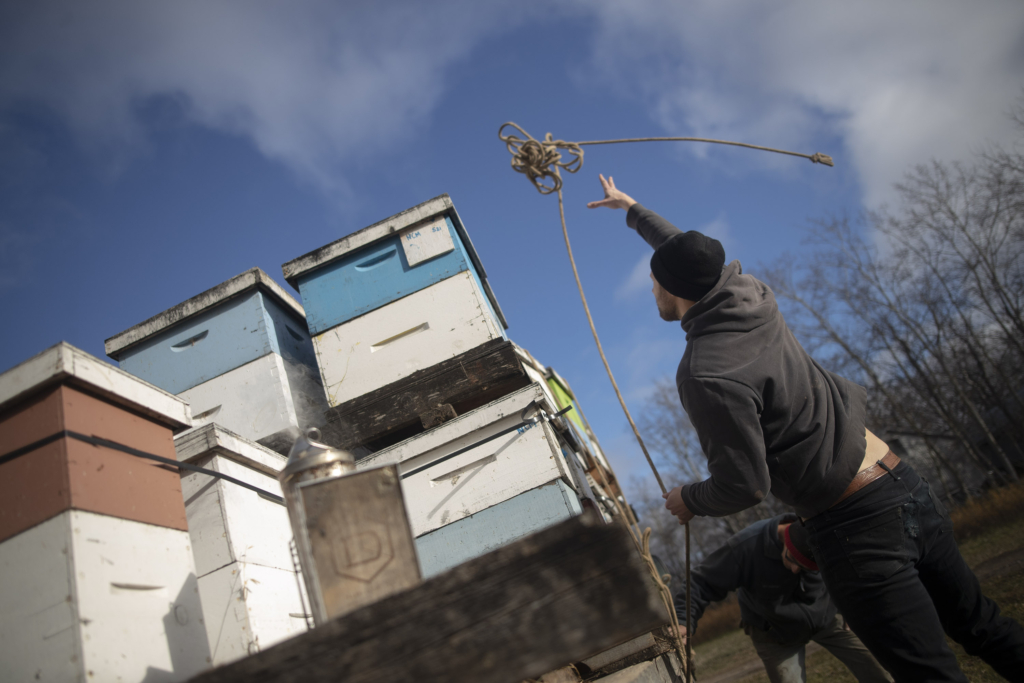
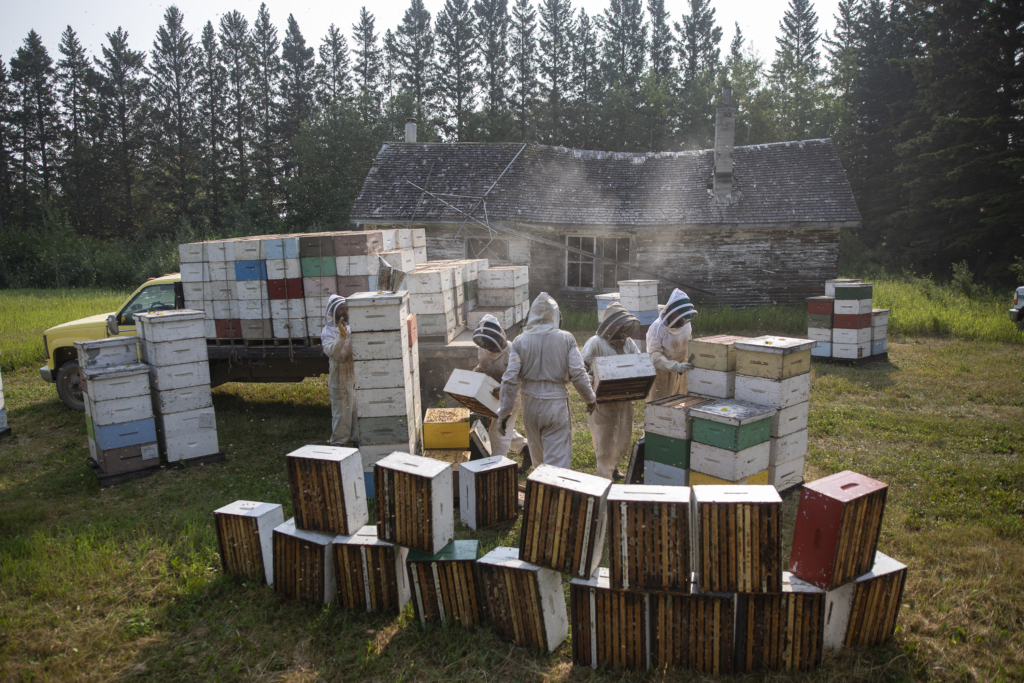
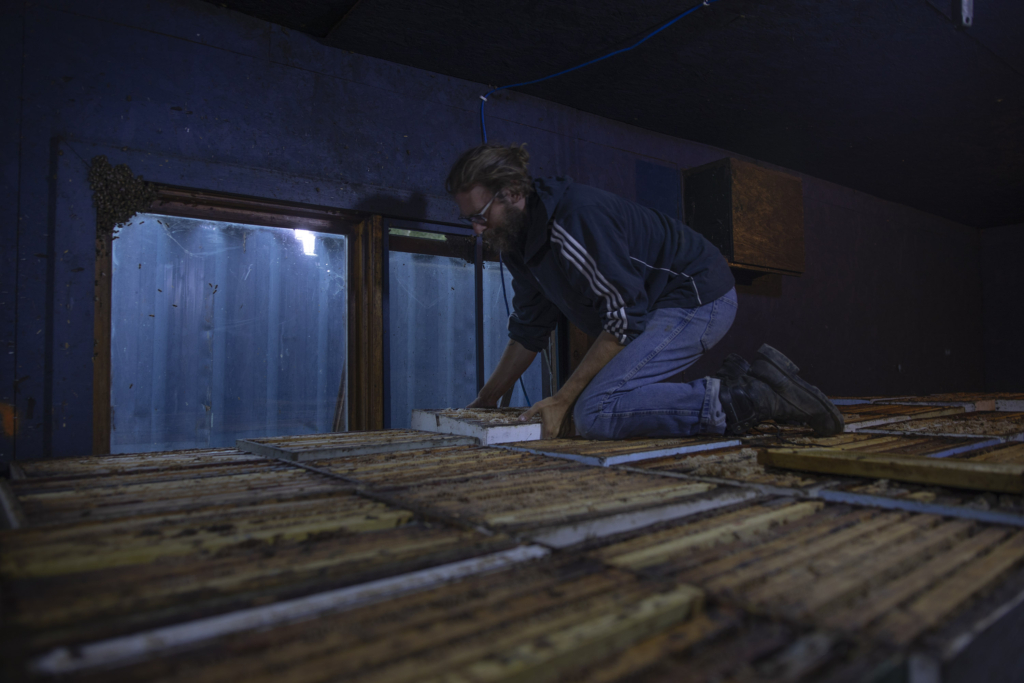
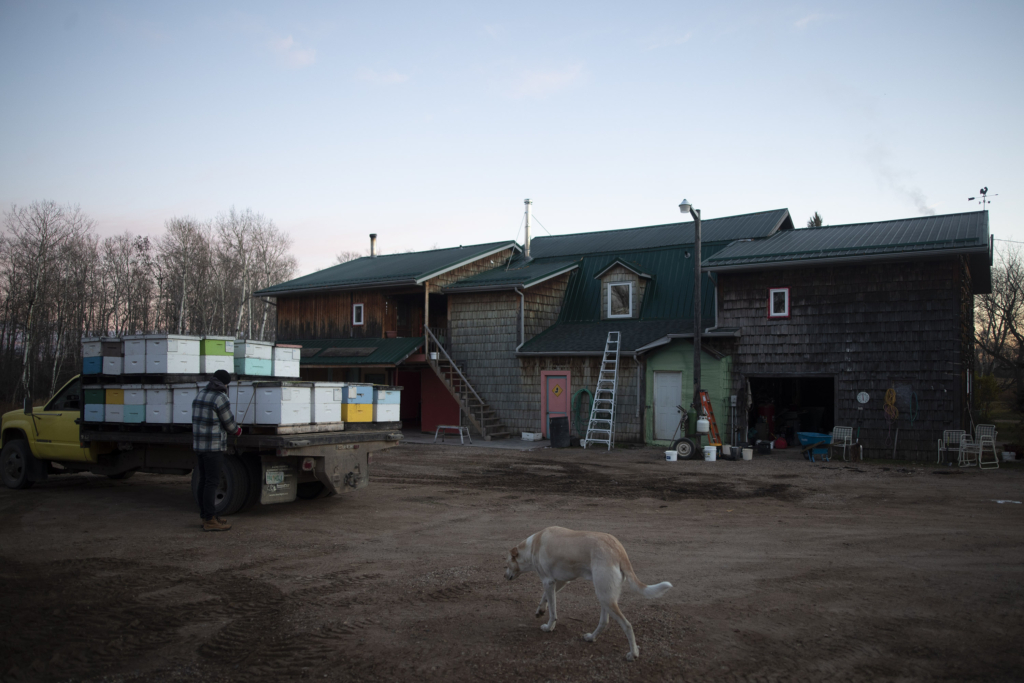
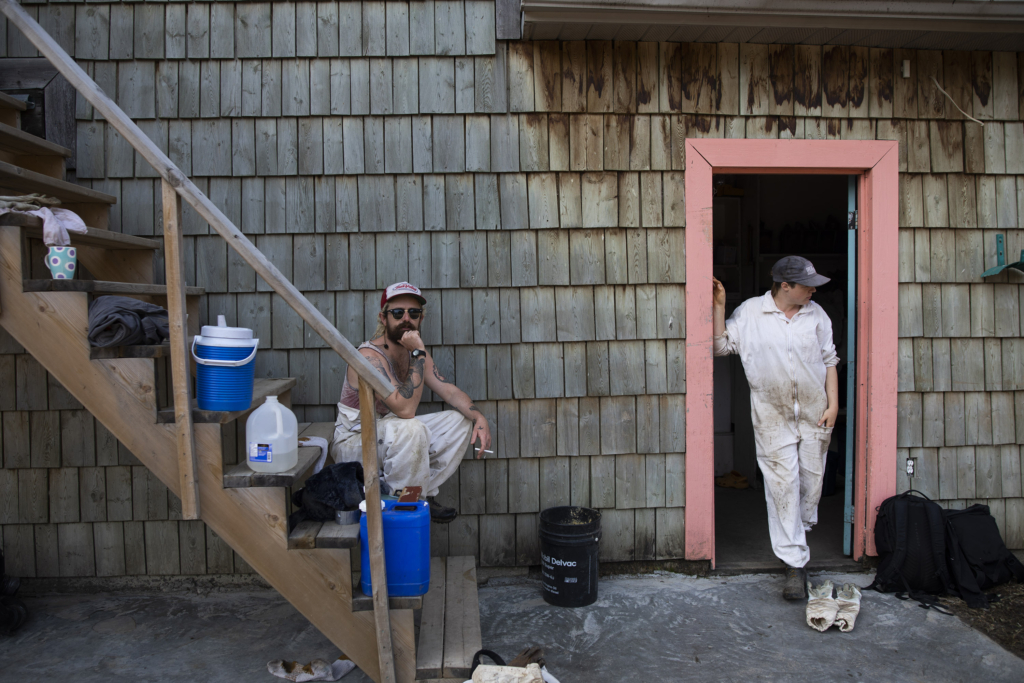
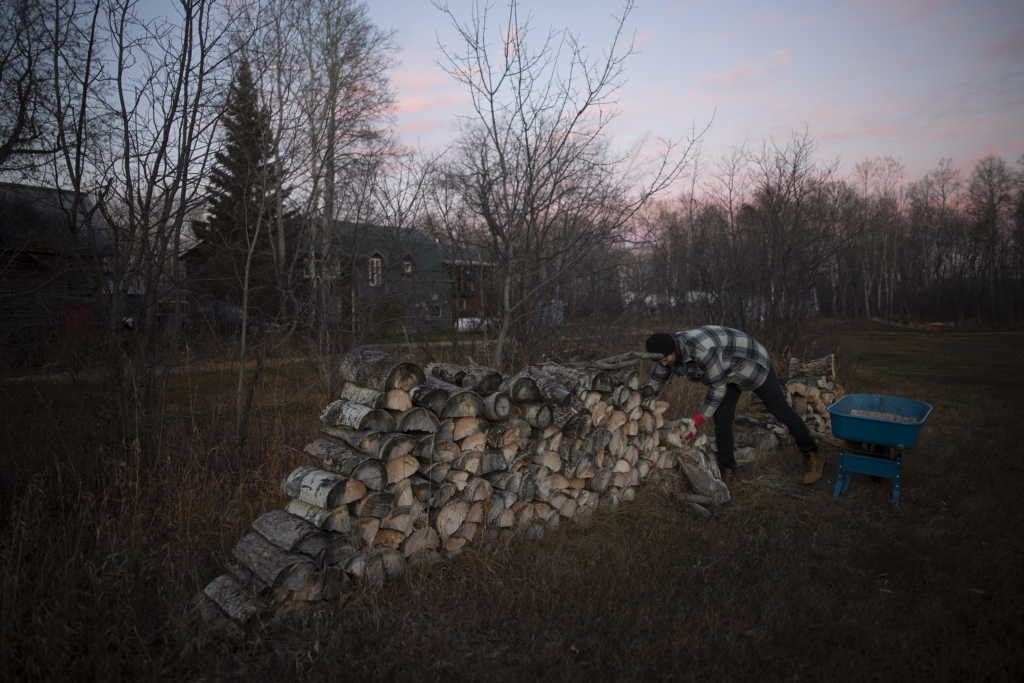
0
